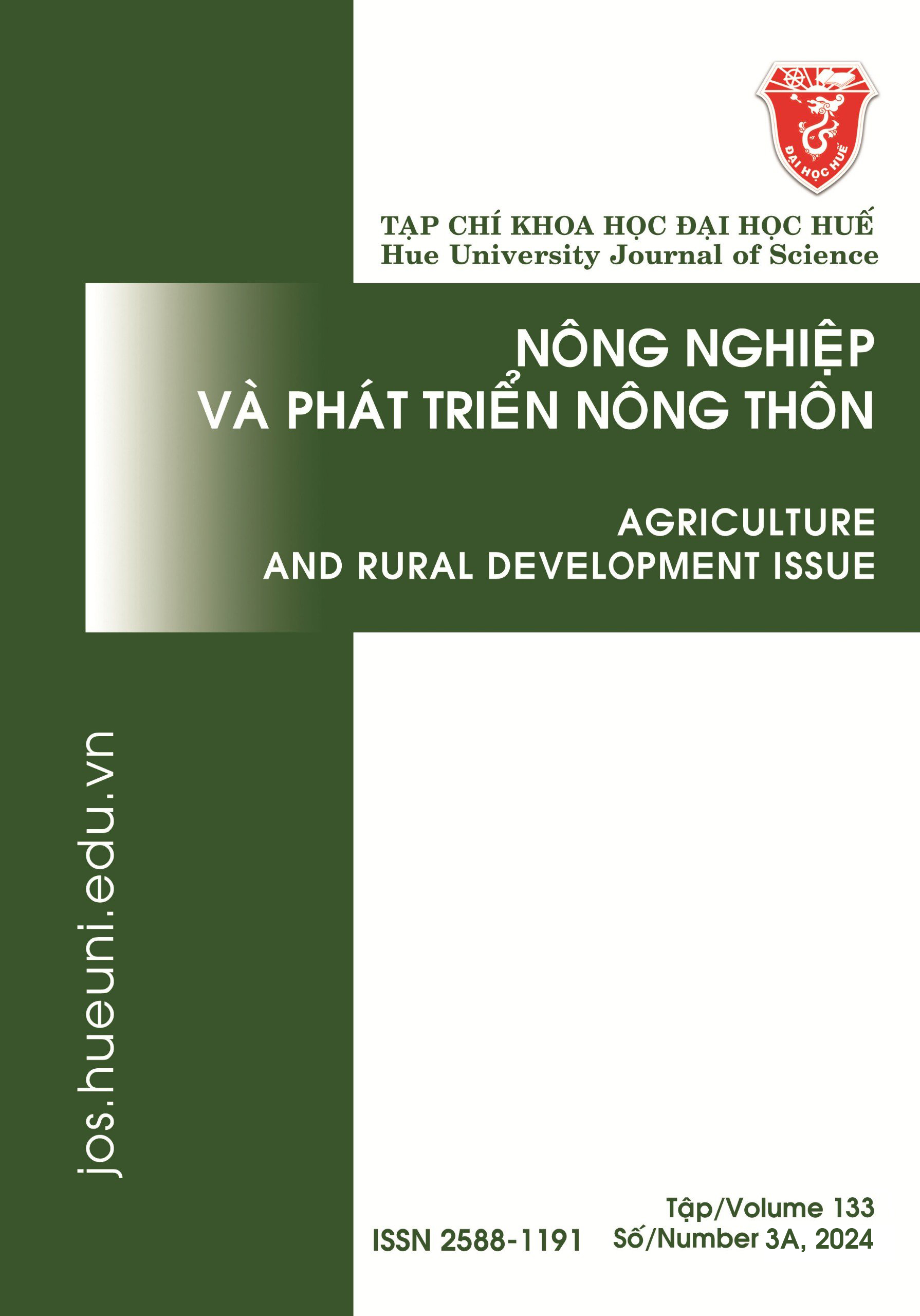Abstract
To help farmers utilise Information and Communication Technologies (ICT) more effectively, it is important to understand the farmers’ perception of the effectiveness and effect of ICT use in agricultural production. This research examines farmers’ perception of the effectiveness and effect of ICT use in agricultural production. A random sample of 217 was drawn from a total population of 473 farmers farming in Thang Binh district, Quang Nam province. Descriptive statistics and inferential statistics were applied to analyse the collected data. The study shows that mobile phones, TV and internets were the most common use of ICT tools by farmers. Mobile phones and internet were the most effectiveness of ICT tools as perceived by farmers. It was found that use of ICT could improve agricultural knowledge; (2) enhanced timely agricultural information; (3) increased amount of agricultural information received; (4) improved precision of agricultural information; and (5) strengthened accessing agricultural inputs. A statistically significant relationship existing between impacts of ICT use in agricultural production and farmers’ age (χ2 = 17.05, p = 0.004), education level (χ2 = 9.78, p = 0.044), gender (χ2 = 6.70, p = 0.010), income (χ2 = 8.22, p = 0.040) and farm size (χ2 = 32.15, p = 0.042) was found. Improving local internet systems and providing short course trainings on the use of mobile phones for production and marketing of agricultural produce can be suitable solutions to enhance the farmers’ use of ICT in agricultural production.
References
- Hoang, H. G. (2020), Determinants of the adoption of mobile phones for fruit marketing by Vietnamese farmers, World Development Perspectives, 17, 1–8.
- Lê Văn Vàng, Trương Minh Thái, Châu Minh Khôi, Lê Vĩnh Thúc và Huỳnh Kỳ (2022), Xu hướng phát triển và ứng dụng khoa học –công nghệ trong nông nghiệp, Cần Thơ, Đại học Cần Thơ.
- Hoang, H. G. (2021), Use of information and communication technologies by Vietnamese smallholders: Implications for extension strategies, Information Development, 37(2), 221–230.
- Nguyễn Thế Cường và Trần Đức Nghĩa (2018), Ứng dụng công nghệ thông tin trong nông nghiệp thông minh, Available from: http://qusta.org.vn/lhh/index.php/news/Pho-bien-kien-thuc/Ung-dung-cong-nghe-thong-tin-trong-nong-nghiep-thong-minh-131/.
- Kabir, K. H., Hassan, F., Mukta, M. Z. N., Roy, D., Darr, D., Leggette, H. and Ullah, S. M. A., (2022), Application of the technology acceptance model to assess the use and preferences of ICTs among field-level extension officers in Bangladesh, Digital Geography and Society, 3, 1–13.
- Granguillhome, O. R., Lach, S., Masaki, T., and Rodríguez, C. C., (2022), Mobile internet adoption in West Africa, Technology in Society, 68, 1–10.
- Nyagango, A. I., Sife, A. S., and Kazungu, I. (2023), Use of mobile phone technologies for accessing agricultural marketing information by grape smallholder farmers: a technological acceptance model perspective, Technological Sustainability, 2(3), 320–336.
- Kante, M., R. Oboko, and Chepken, C. (2019), An ICT model for increased adoption of farm input information in developing countries: A case in Sikasso, Mali, Information Processing in Agriculture, 6(1), 26–46.
- Kumar, R. (2023), Farmers’ Use of the Mobile Phone for Accessing Agricultural Information in Haryana: An Analytical Study, Open Information Science, 7(1), 1–10.
- Michels, M., Bonke, V., and Musshoff, O. (2020), Understanding the adoption of smartphone apps in crop protection, Precision Agriculture, 21(6), 1209–1226.
- Hồ Quang Bửu (2020), Quảng Nam cơ cấu lại ngành nông nghiệp gắn với xây dựng nông thôn mới, Available from: https://www.tapchicongsan.org.vn/web/guest/thuc-tien-kinh-nghiem1/-/2018/820206/quang-nam-co-cau-lai-nganh-nong-nghiep-gan-voi-xay-dung-nong-thon-moi.aspx.
- De Vaus, D. (2014), Surveys in social research, Australia: Allen & Unwin Academic Publisher.
- Sullivan, G. M. and Artino, A. R. (2013), Analyzing and interpreting data from likert-type scales, Grad Med Educ, 5(4), 541–547.
- Slovin, E. (1960), Slovin’s Formula for Sampling Technique, Available from: https://prudencexd.weebly.com/.
- Van Phan, P. and O'Brien M. (2022), Is small beautiful? An empirical analysis of land characteristics and rural household income in Vietnam, Australian Journal of Agricultural and Resource Economics, 66(3), 561–580.
- Nguyen, T. T., Nguyen, T. T., and Grote U., (2023), Internet use and agricultural productivity in rural Vietnam, Review of Development Economics, 27(3), 1309–1326.
- Aparo, N. O., Odongo, W., and De Steur, H. (2022), Unraveling heterogeneity in farmer's adoption of mobile phone technologies: A systematic review, Technological Forecasting and Social Change, 185, 1–123.
- Abebe, A. and Mammo Cherinet, Y. (2019), Factors Affecting the Use of Information and Communication Technologies for Cereal Marketing in Ethiopia, Journal of Agricultural & Food Information, 20(1), 59–70.
- Nyagadza, B. et al. (2022), Rural small scale farmers’ smart mobile phone usage acceptance prognosticators for agricultural marketing information access, SN Social Sciences, 2, 1–37.
- Kabbiri, R. et al. (2018), Mobile phone adoption in agri-food sector: Are farmers in Sub-Saharan Africa connected?, Technological Forecasting and Social Change, 131, 253–261.
